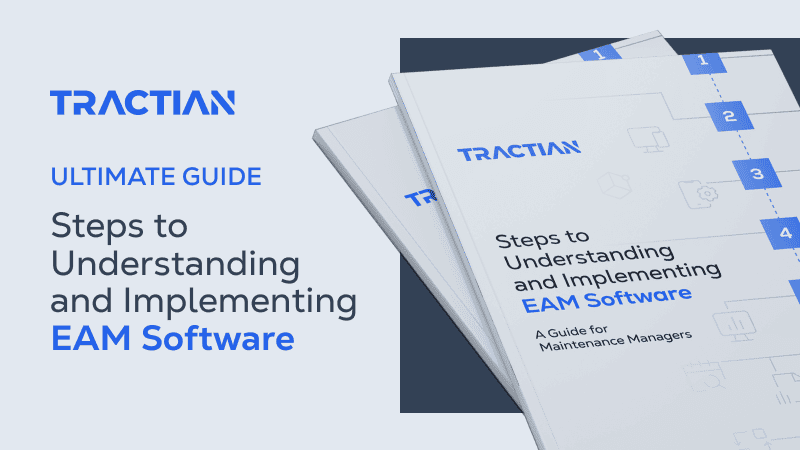The expression ‘time is money’ has never been more accurate than in today’s fast-paced industrial landscape, particularly when it comes to machinery maintenance and reliability. Unplanned downtime can lead to significant losses, making predictive maintenance an essential practice for modern manufacturing and production facilities.
Predictive maintenance (PdM) is one of the more complex strategies when it comes to implementation, simply because minor performance changes are difficult to detect without the right tool. A combination of condition monitoring, vibration monitoring, machine learning, and analytics is paramount for a successful predictive strategy.
At the heart of most predictive plans are advanced sensors, which have become pivotal in transforming maintenance from reactive to proactive. TRACTIAN cutting-edge, IoT vibration sensors are at the forefront of this transformation, offering a seamless and efficient way to anticipate and prevent machine failures.
Learn more about Types of Maintenance here.
By monitoring the condition of equipment in real-time and identifying potential issues before they escalate into costly repairs or operational halts, these sensors enable maintenance professionals to make informed decisions, optimizing machinery performance and extending equipment life cycles. This not only saves on maintenance costs but also ensures continuous production with minimal interruptions.
Selecting the best vibration sensor for predictive maintenance can be a tricky task, since there are many sensors that can detect faults, some of them specific to certain machine categories. In this article, we’ll go over aspects to consider when choosing the most suitable advanced vibration sensor for your application.
Maintenance vs. Repair: Learn the Difference
Introduction to Vibration Sensors in Predictive Maintenance
Vibration sensors are not just tools for monitoring; they are the cornerstone of modern predictive maintenance strategies. These devices can detect the slightest anomalies in machinery, which are often precursors to more significant issues. This capability is fundamental to condition-based monitoring (CbM) and PdM techniques, where the focus is on monitoring the condition of equipment to foresee potential failures.
TRACTIAN vibration sensor technology uses advanced analytics and precision engineering to not only capture real-time data but also interpret it to provide a comprehensive view of asset health. This approach aligns perfectly with the overarching goals of predictive maintenance – to anticipate problems before they happen and to plan maintenance activities in a way that minimizes downtime and maximizes equipment life cycles.
The average life cycle of engines, pumps, compressors, bearings, and other critical machinery can vary greatly depending on their usage and maintenance. Regular wear, if left unchecked, can lead to premature failures and unexpected shutdowns, for example.
By accurately detecting vibrations that signify the early stages of mechanical degradation, these IoT sensors allow for timely interventions. This proactive maintenance approach not only extends the life of these assets but also ensures their optimal performance and reliability, which is crucial in an industry where every minute of downtime can equate to significant financial loss.
RAM Analysis: The Complete Guide
The Science Behind Vibration Monitoring
Vibration monitoring involves the meticulous detection and analysis of vibrational patterns within machinery, each type of vibration serving as a critical indicator of machine health. The vibrations can be broadly categorized as harmonic, periodic, random, and transient, each representing different aspects of machine health and performance. Below are some of the benefits of vibration analysis and monitoring:

Check out our Vibration Analysis Guide
Harmonic vibrations are typically associated with rotating parts and can indicate issues like unbalance or misalignment. Periodic vibrations often point to specific recurring issues within a machine cycle, signaling the need for component adjustments or replacements. On the other hand, random vibrations might suggest more complex problems like structural weaknesses or degradation, while transient vibrations – sudden and short-lived – often herald the onset of new or escalating issues.
At the core of vibration monitoring is the ability to decipher these vibrations and understand what they signify about the machinery’s condition. An increase in amplitude, for example, is often a red flag for potential misalignment or unbalance in rotating machinery. A change in frequency can be indicative of issues like bearing faults or gear wear. These early warnings are crucial in the system fault timeline – a progression of faults that, if left unchecked, can lead to complete system failure and production downtime.
Below is a simulated system fault timeline, from installing a new motor to failure, along with different PdM sensors most suited to that stage. After a motor’s warranty has expired, maintenance teams should pay more attention to frequent manual inspections and periodic preventive maintenance routes.

If a fault emerges between scheduled preventive maintenance, there is a chance the asset will break down and face unplanned downtime. This is where predictive maintenance and smart vibration sensors come in: having the right strategy in place can be the difference between a healthy machine and a broken down one.
A vibration sensor app will detect potential faults as early as possible by interpreting the vibration signals and analyzing them with the help of cutting-edge algorithms. Maintenance teams can then track the progression of faults over time, monitoring current machine health and predicting issues before they become critical.
Learn the importance of the Criticality Matrix here.
Choosing the Right Vibration Sensor for Predictive Maintenance

The selection of an appropriate sensor is critical to the success of any PdM program. There are many to choose from and some focus specifically on measuring one variable or monitoring one machine category. Today, we’ll focus on the ones tailored to vibration monitoring.
The key attributes that define a high-quality vibration sensor include sensitivity, range, and accuracy. Each of these features plays a vital role in ensuring the sensor can effectively monitor and analyze the condition of industrial machinery.
- Sensitivity is crucial for detecting the earliest signs of equipment malfunction. High sensitivity in a vibration sensor means it can pick up the slightest irregularities in machinery operation, which might be imperceptible to less sophisticated equipment. This early detection is vital for addressing issues before they escalate into major problems.
- Range refers to the sensor’s ability to operate effectively across various conditions and types of machinery. A sensor with a broad range can adapt to different operational frequencies and amplitudes, making it versatile enough to be used in a wide array of industrial applications, from high-speed rotors to slow-moving heavy machinery.
- Accuracy is about the sensor’s ability to provide precise and reliable data. Accurate vibration sensors ensure that the maintenance team receives correct information, crucial for making informed decisions about maintenance actions. Without accurate data, even the most advanced PdM strategies can be rendered ineffective.
TRACTIAN vibration sensors are engineered to excel in all these aspects. Their exceptional sensitivity allows for the early detection of even the most subtle anomalies, ensuring that potential issues can be addressed well before they develop into significant problems.
The broad operational range of these sensors makes them suitable for a variety of machine categories, enhancing their applicability across different industry sectors. Finally, the accuracy of TRACTIAN sensors guarantees that the data provided is both reliable and actionable, enabling maintenance teams to make informed decisions.
Smart Trac has an accelerometer inside for precise vibration monitoring, but can also track variables like temperature and hour meter. Its design and wireless functionality make it more than just a monitoring tool; it’s a comprehensive solution for PdM. The sensors can be installed in under 3 minutes and connect to mobile networks to give maintenance teams real-time, reliable data from anywhere, on any mobile device.
TRACTIAN vibration sensors are designed to integrate seamlessly into various industrial environments, from Automotive and Aerospace industries to Food and Chemical. They provide essential data that helps in making informed decisions about maintenance actions, effectively shifting the maintenance paradigm from a reactive to a proactive approach.
The implementation of TRACTIAN’s vibration sensors in a predictive maintenance program is, therefore, not just a technological upgrade; it’s a strategic investment in the longevity and reliability of industrial assets.


